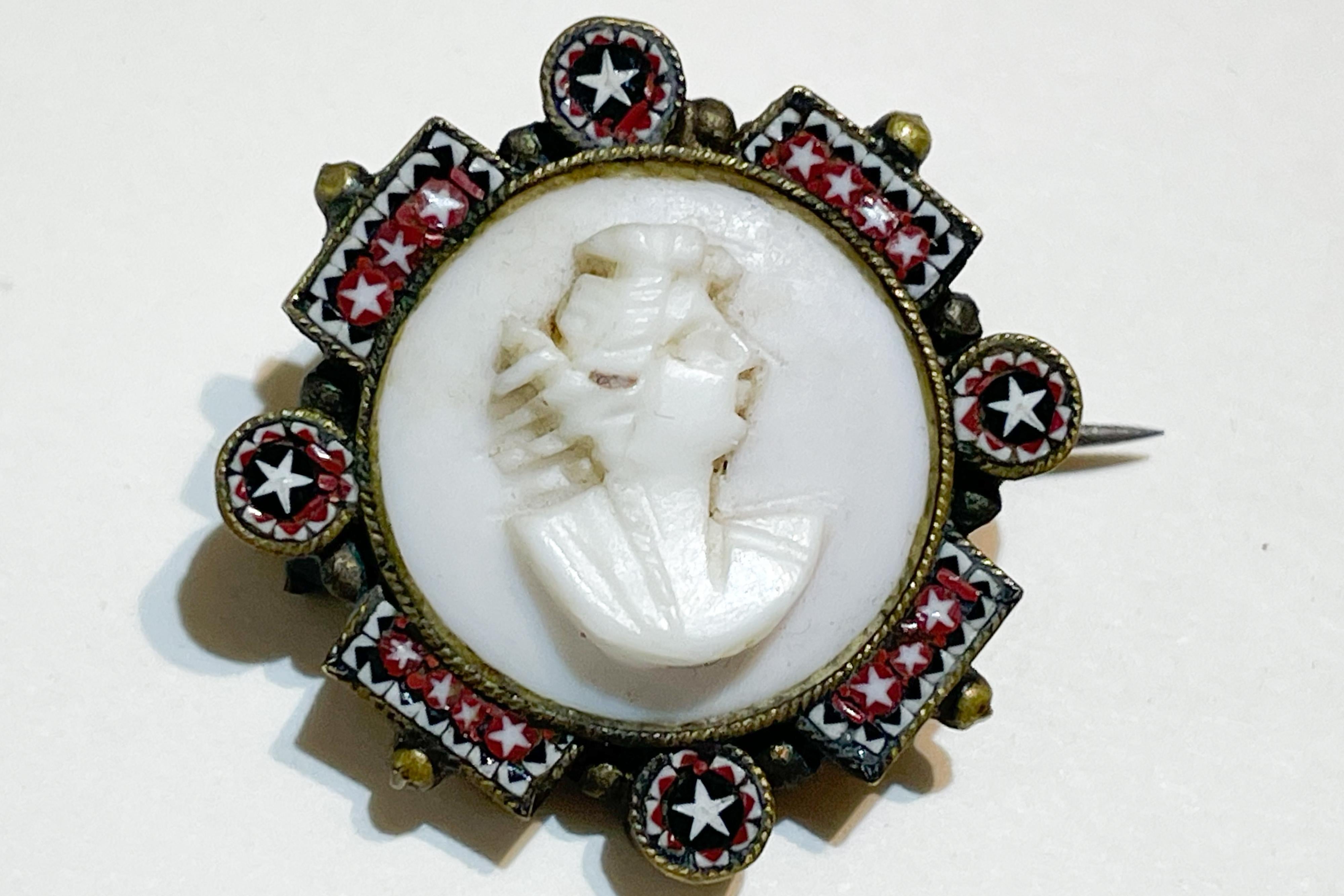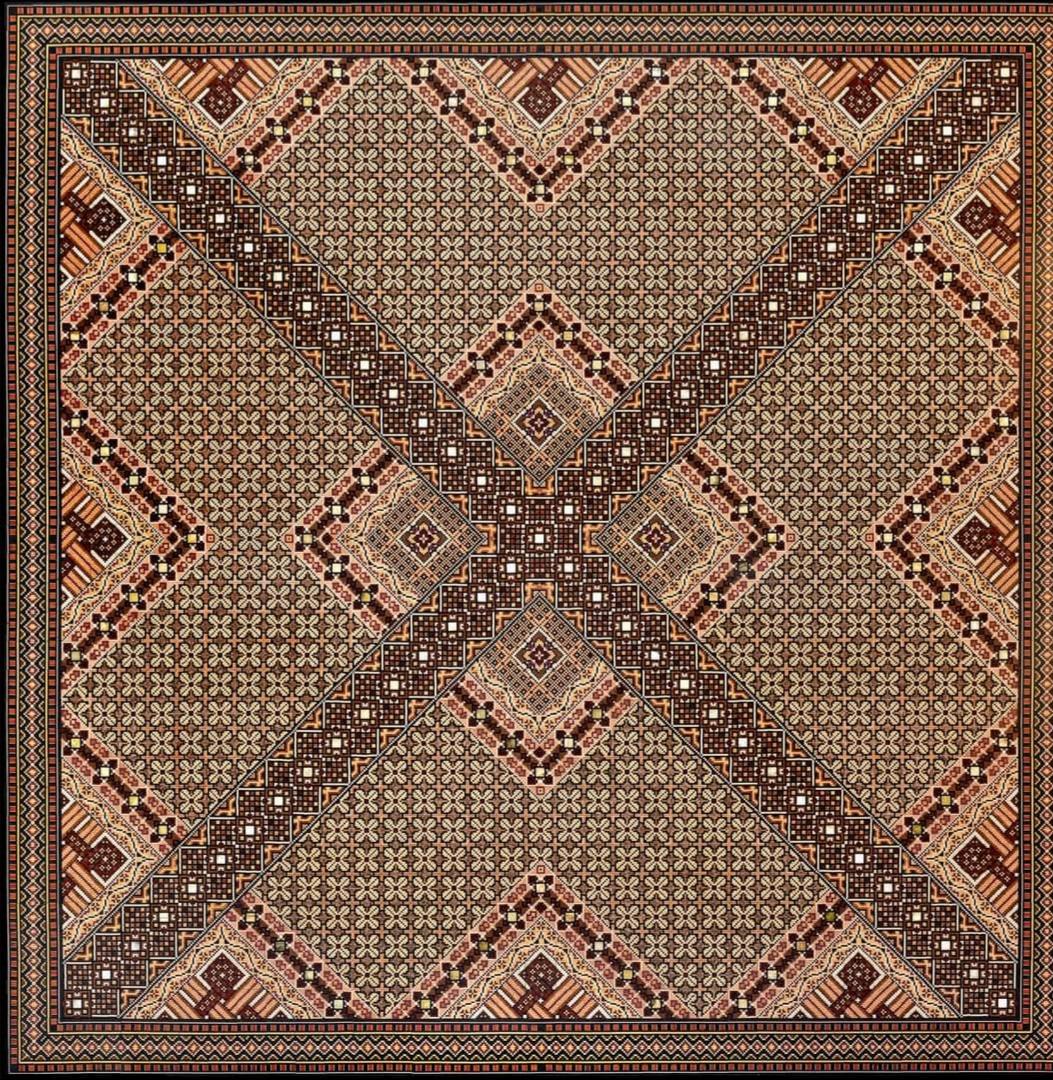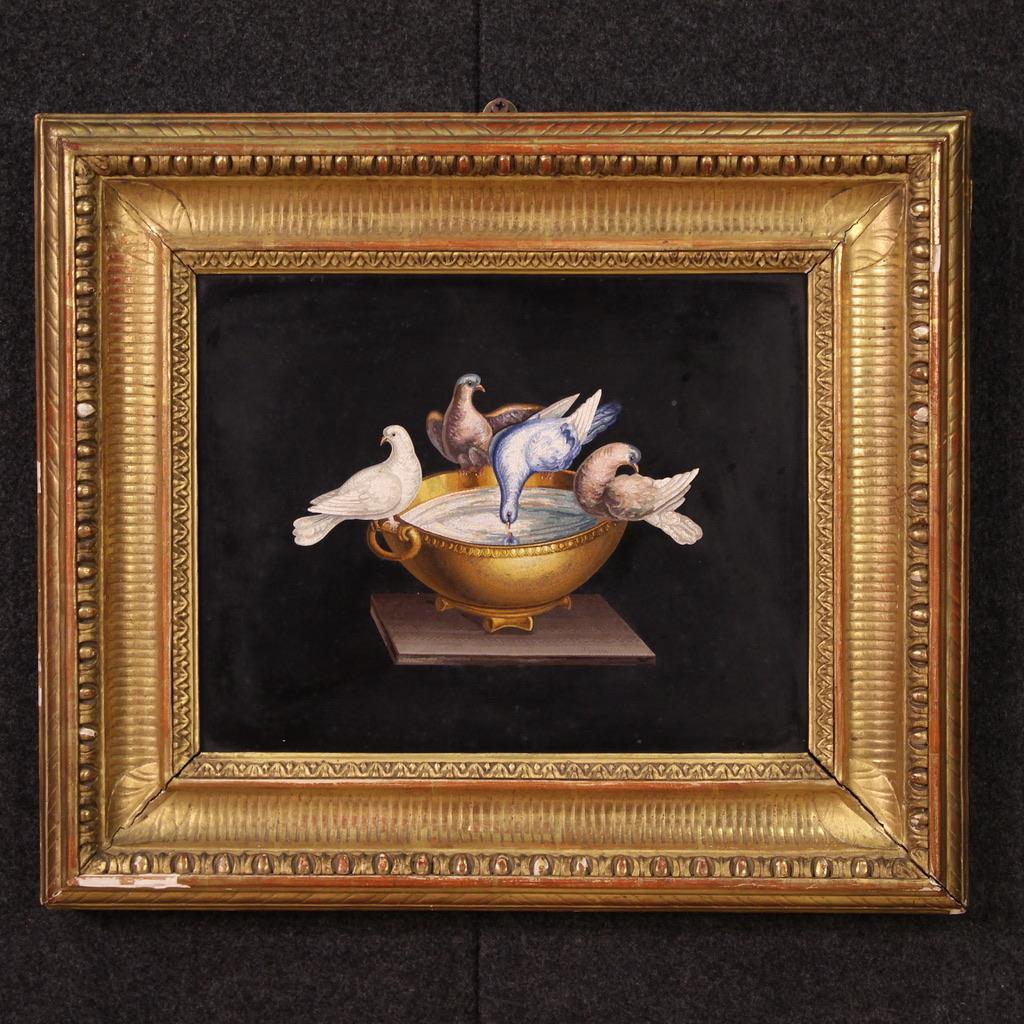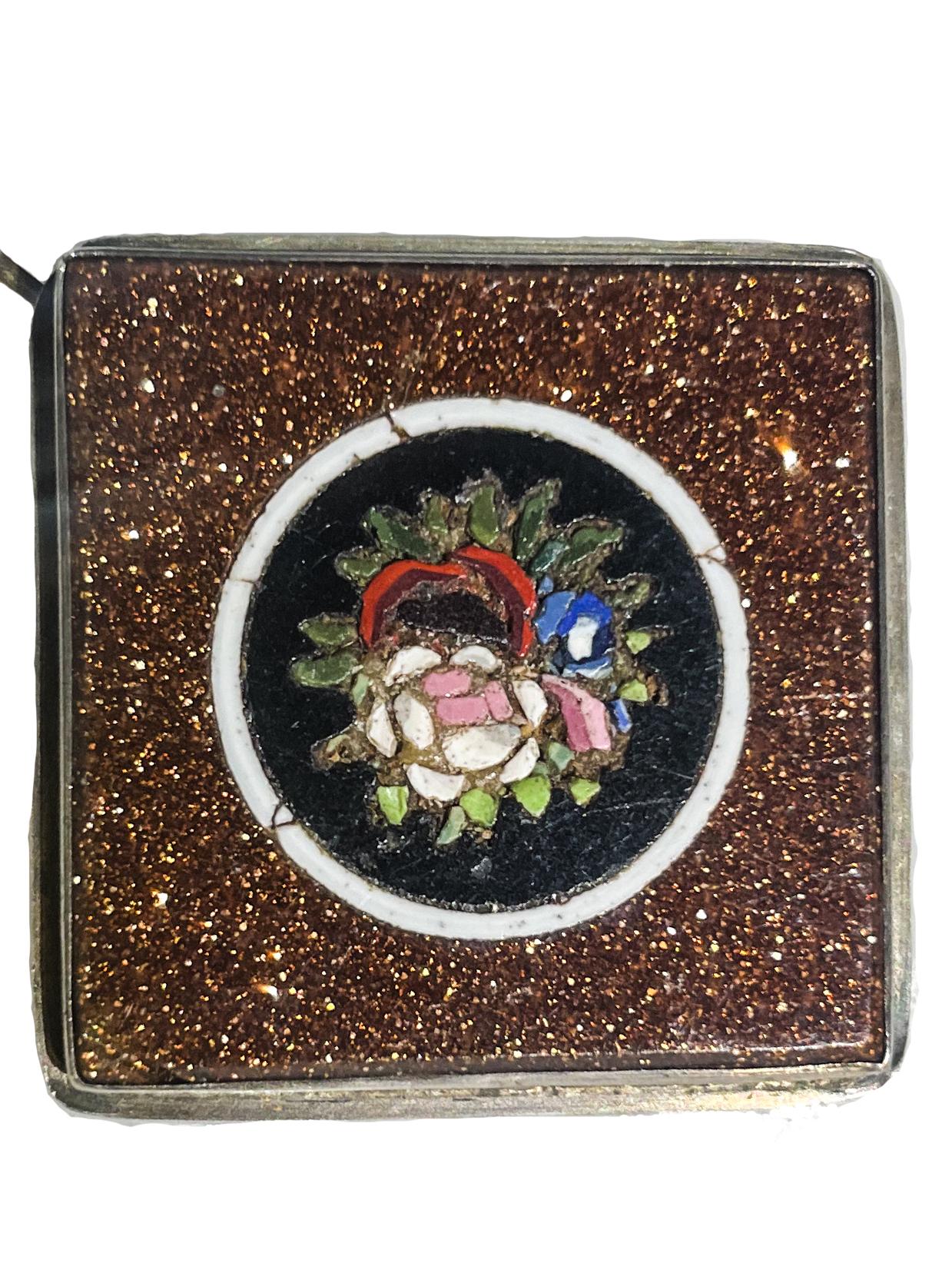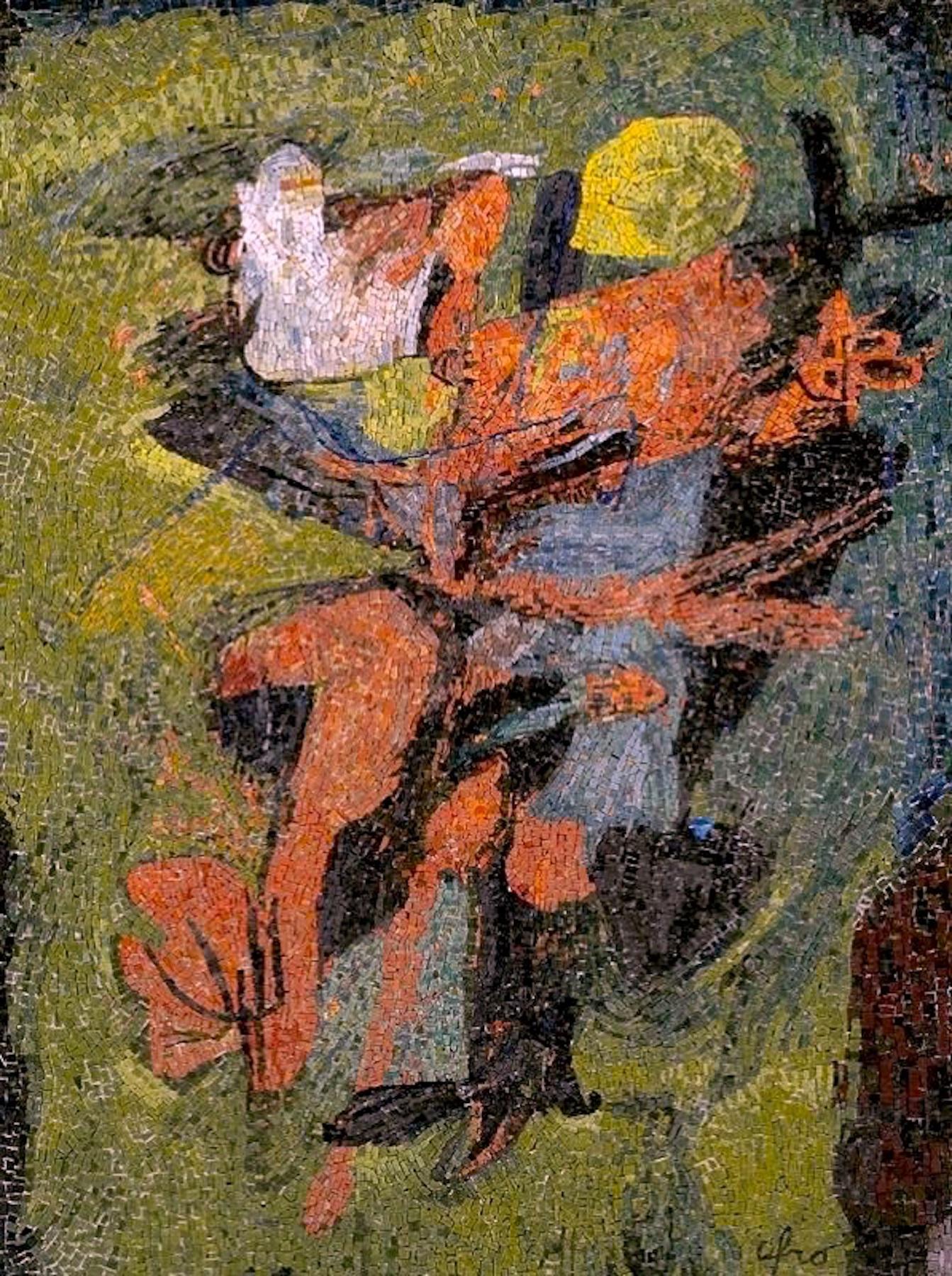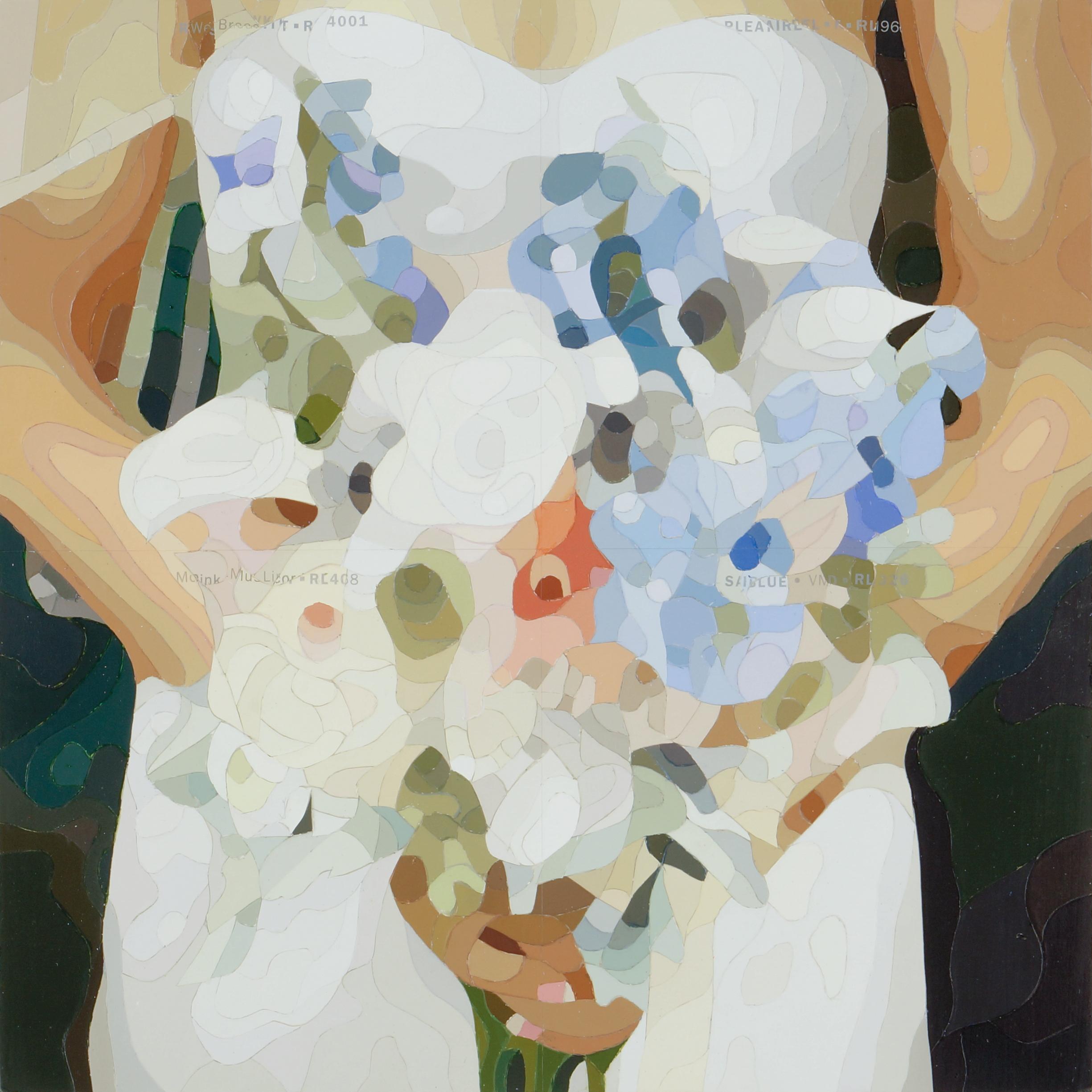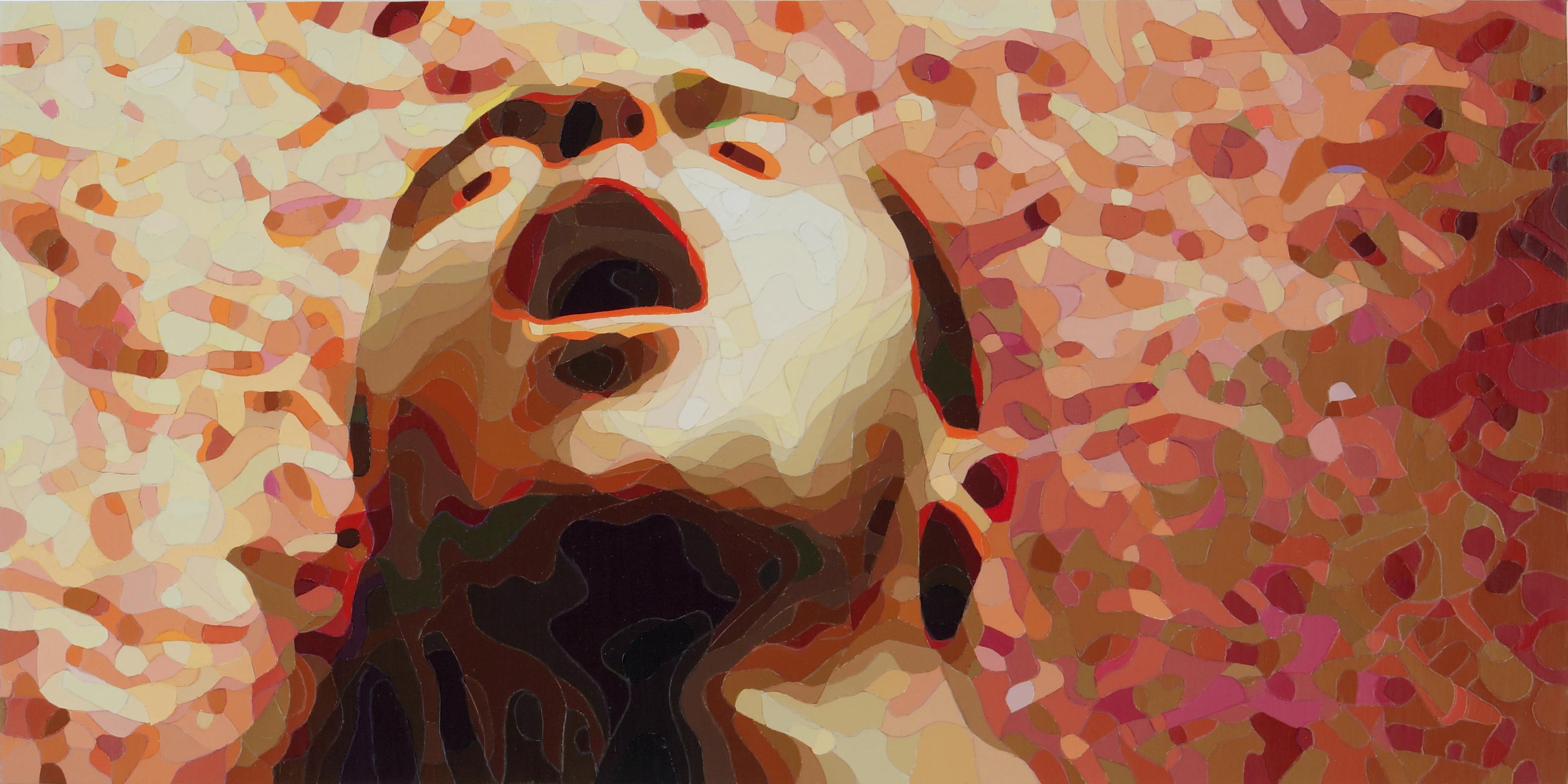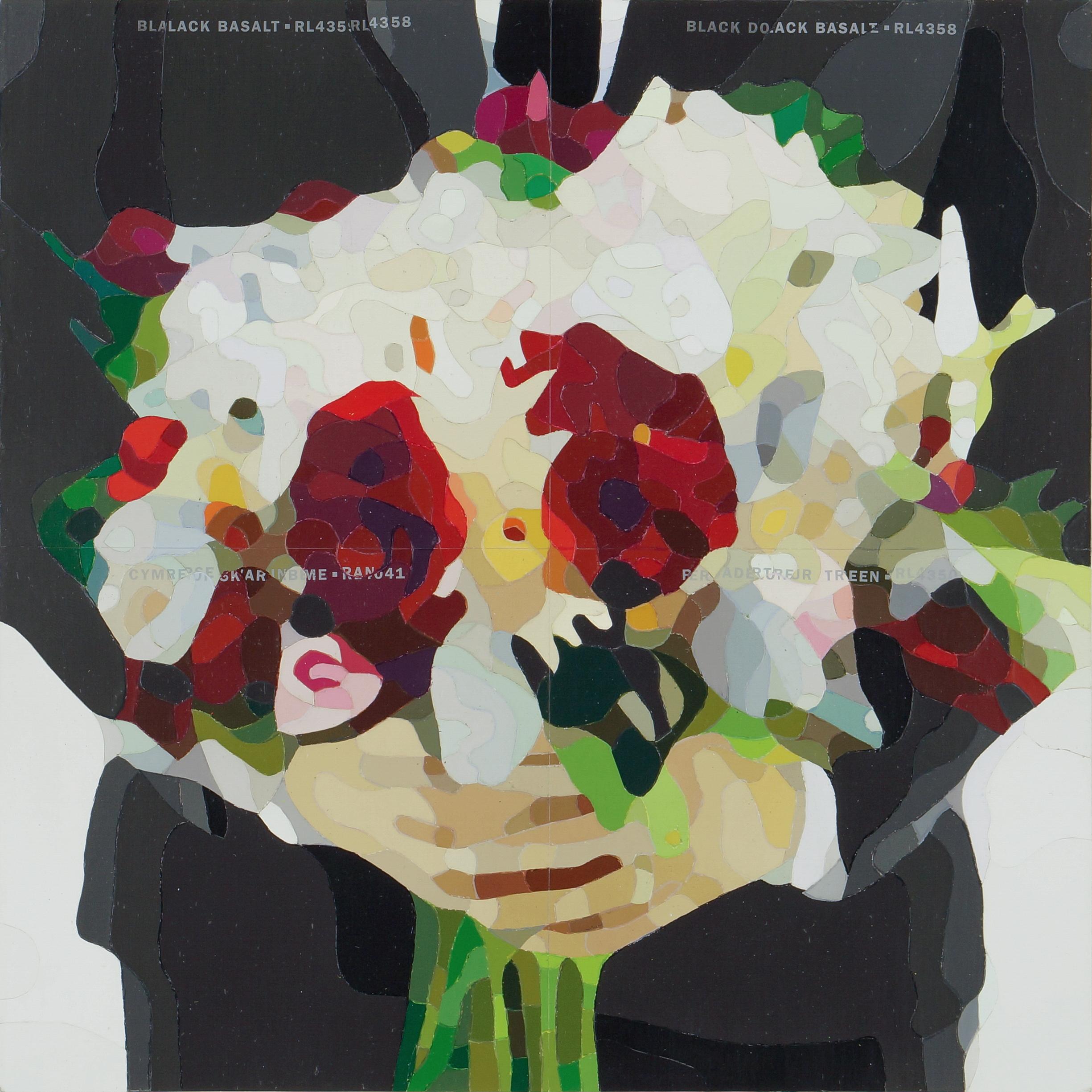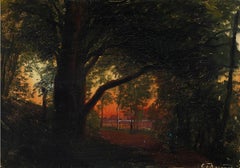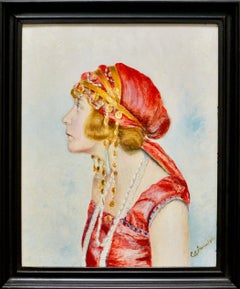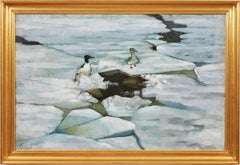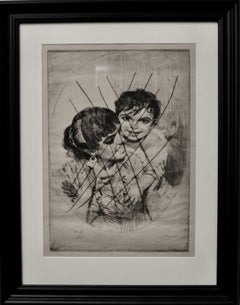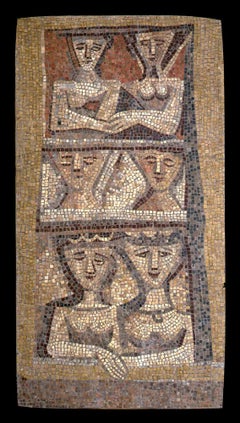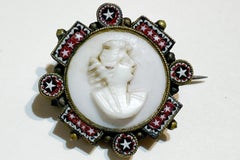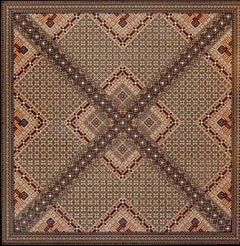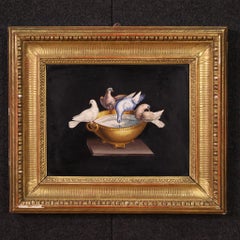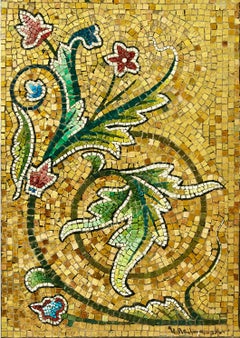
Gold Mosaic Floral and Accantus Leaves Design
View Similar Items
Want more images or videos?
Request additional images or videos from the seller
1 of 5
Veikko AaltonaGold Mosaic Floral and Accantus Leaves Design1937
1937
About the Item
- Creator:Veikko Aaltona (1910 - 1990)
- Creation Year:1937
- Dimensions:Height: 23.82 in (60.5 cm)Width: 17.92 in (45.5 cm)Depth: 1.97 in (5 cm)
- Medium:
- Period:
- Condition:In good condition. Backside with some cracks to concrete but not visible on the frontside. The mosaic is mounted in a steel frame.
- Gallery Location:Stockholm, SE
- Reference Number:1stDibs: LU2608214980802
About the Seller
5.0
Vetted Professional Seller
Every seller passes strict standards for authenticity and reliability
1stDibs seller since 2023
15 sales on 1stDibs
Authenticity Guarantee
In the unlikely event there’s an issue with an item’s authenticity, contact us within 1 year for a full refund. DetailsMoney-Back Guarantee
If your item is not as described, is damaged in transit, or does not arrive, contact us within 7 days for a full refund. Details24-Hour Cancellation
You have a 24-hour grace period in which to reconsider your purchase, with no questions asked.Vetted Professional Sellers
Our world-class sellers must adhere to strict standards for service and quality, maintaining the integrity of our listings.Price-Match Guarantee
If you find that a seller listed the same item for a lower price elsewhere, we’ll match it.Trusted Global Delivery
Our best-in-class carrier network provides specialized shipping options worldwide, including custom delivery.More From This Seller
View AllSunset over Dyrehaven. Oil on Canvas, 1860.
Located in Stockholm, SE
Carl Frederik Aagaard, Sunset over Dyrehaven. Signed C.F. Aagaard. Oil on canvas laid on card box panel. 22×32 cm without frame. A tergo written:...
Category
1860s Naturalistic Landscape Paintings
Materials
Canvas, Oil
Early 20th century Woman Profile Portrait in a Red Dress.
Located in Stockholm, SE
A small colorful and interesting profile portrait of a blond woman dressed in a red dress and wearing lots of jewelry also on her head scarf. Signed but unfortunately not identified...
Category
Early 20th Century Other Art Style Portrait Paintings
Materials
Oil, Wood Panel
Goosander Birds On Ice Floes
Located in Stockholm, SE
A female and male Goosander bird on ice floes. In the center, a small opening in ice covered waters. This painting, by Christian Berg (1893-1976) is quite interesting and unusual for...
Category
1910s Naturalistic Animal Paintings
Materials
Canvas, Oil
$1,444 Sale Price
48% Off
Mothers Joy III, also called Maternal Delight III
By Anders Zorn
Located in Stockholm, SE
Maternal Delight III, or Mothers Joy III, (In Swedish Modersglädje III) by Anders Zorn depicting a young woman lovingly playing with her child. A small amusing detail is the small child face visible on the lower left side, just outside the oval. This is an extremely rare etching and is one of two or possibly three known in existence of a so called cancellation proof. A cancellation proof etching of the Maternal Delight III is in the Boston Public Library Collection, USA.
Signed Zorn in the plate. When Zorn decided that the vey limited number of prints were all done he took his burin, (the steel cutting tool used in engraving also, back in history, called graver), and made cross hatched lines across the figures on the original plate, after which he made a couple of after proofs or cancellation proofs and the present etching is one of them. This gives the present work a special and interesting image of one of Zorns best and rarest etchings. Created in London 1883, the first year he made etchings.
Etching 276 x 406mm
Sheet circa 33,5 x 48cm
Literature
Asplund 6. Delteil. 5. Hjert & Hjert 6. Lidbeck 6.
Unfortunately some reflexes in the photos.
Anders Zorn (1860-1920) was a Swedish artist who attained international success as a painter, sculptor, and etching artist. He was to become one of Swedens foremost artists ever. No technique was foreign to him, he worked equally well with watercolors, wash technique or oil painting. The etching technique also attracted this virtuoso and the etchings contributed greatly to his success.
Between 1875 to 1880, Zorn studied at the Royal Swedish Academy of Arts in Stockholm, where he amazed his teachers with his talent. Members of the Stockholm Society approached him with commissions. In early 1881, Zorn met Emma Lamm, whose background was quite different from his. Emma Lamm was from a wealthy Jewish merchant family. She was interested in art and culture and, after a long engagement, they were married in 1885.
During the 1880s Zorn traveled extensively, to London, Paris, the Balkans, Spain, Italy, and the United States. In the 1890s when he was in Paris, he spent much time with Albert Edelfelt. He quickly became an international success and one of the most highly regarded painters of his era. In the beginning of Zorns career, it was primarily his skill as a portrait painter that gained him international acclaim, based principally upon his incisive ability to depict the individual character of his model, he came to portray many great people including three American Presidents: Grover Cleveland, William H. Taft, and Theodore Roosevelt.
Zorn also depicted Swedish dignitaries, for example King Oscar II in 1898, King Gustaf V in 1909, Queen Sophia in 1909, Prince Eugen in 1891, fellow artist Carl Larsson in 1897 and August Strindberg in 1910.
In the late 1880s, Zorn began working in the genre that is probably his hallmark for the general public, nude studies in the open air. Zorn had long been fascinated by the movements of water and the reflections of light on the water surface. Now Zorn chose to place a nude model by or in the water, with the aim of depicting people in nature.
When Zorn started the art of etching, he developed a technique with Rembrandt as a model, where he built up the motif with bursts of lines. The first etching was created in London in 1883, the same year as our Maternal Delight. Axel Herman Hägg, then active in London, was Zorn's teacher in this special technique. Hägg was the person Zorn depicted in his first etching. Zorn quickly mastered the etching technique itself and a unanimous art expert was able to conclude early on that Rembrandt had now found his equal.
At the age of 29, he was made a Chevalier de la Légion d'honneur at the Exposition Universelle 1889 Paris World Fair.
Zorn's reputation as an etcher spread across the world. Soon he could find his etchings in the major world metropolises in Europe and the USA. Zorn produced 289 different etchings, including portraits, genre studies and nude studies.
The motifs on Anders Zorn's graphic sheets are most often based on his own paintings, as ours, which is based on a watercolor he made in 1882 on his first trip to Spain. Even during Zorn's lifetime, his etchings were considered to be artistically superior to his paintings. As a result, his graphics quickly became sought after on the international art market. He was compared to Rembrandt, who as mentioned earlier was Zorn's great role model in the art of etching. Zorn was able to combine the old technique with his personal form of impressionism and the temporary and everyday with the universal. On the printing plates, one can study his outstanding etching technique, his characteristic play with parallel lines drawn in different directions, with varying degrees of force and intensity.
Zorn's art made him wealthy and he was thus able to build up a considerable collection of art. In their joint will, Anders and Emma Zorn donated their entire holdings to the Swedish State.
Some of his most important works can be seen at the National Museum of Fine Arts in Stockholm. Other museums holding major works by Zorn include the Musée d'Orsay in Paris, the Metropolitan Museum of Art in New York, and the Museum of Fine Arts, Boston. The Zorn Collections located in Mora and Garberg, Älvdalen, consist of four museums dedicated to the life and works of Anders Zorn. Shown there are extensive works of Zorn and his collected art.
The Bellman Prize (Bellmanpriset) is a literature prize for "an outstanding Swedish poet", every year awarded by the Swedish Academy. The prize was established by Anders Zorn and his wife Emma in 1920.
The motif: The present etching is based on a central and important work from Zorns first important trip to Spain, 1881-1882. After visiting Madrid and Seville, Zorn set off for Cádiz, tempted by the sea and the city’s women who were reputed to be the most beautiful in all of Spain.
In Maternal Delight, also translated to Mothers Joy and Mothers Pride...
Category
1880s Other Art Style Portrait Prints
Materials
Paper
Russian Figure Study of a Girl in a Folk Dress
Located in Stockholm, SE
This compelling full-length figure study depicts a young girl dressed in traditional Russian folk attire. Likely painted by a Russian artist in the second half of the 19th century, t...
Category
Late 19th Century Other Art Style Figurative Paintings
Materials
Paper, Oil, Cardboard
Portrait of a Bearded Man
Located in Stockholm, SE
The Portrait of a Bearded Man is an early work by Swedish artist Rune Kurt Haries Lagerbrink, who occasionally signed his works as "R. Lager." Painted in oil on cardboard and dated 1...
Category
1940s Other Art Style Portrait Paintings
Materials
Oil, Cardboard
You May Also Like
Women at the Window - Mosaic by Massimo Campigli - 1947
Located in Roma, IT
Mosaic on cement panel.
Exhibitions:
- "Massimo Campigli - Mediterraneità e Modernità", Darmstadt 2003, ed. Mazzotta, Klaus Wolbert, n. 218, p. 333 (full page).
- "Il Tempo dell...
Category
1940s Modern More Art
Materials
Mosaic
Micromosaic and Pink Shell Cameo Brooch.Early 20th century. Signed F.A.P. Florence
Located in Firenze, IT
Brooch with Cameo and Micromosaic
Late 19th century - early 20th century
Materials: Shell cameo, micromosaic in glass tesserae, metal alloy (likely brass)
Central cameo depicting a...
Category
Late 19th Century Art Nouveau More Art
Materials
Mosaic, Intaglio
"Embroidered Ukraine" panel
Located in Edinburgh, GB
Description: This stunning panel is a true masterpiece of Ukrainian art, listed in the book of records of Ukraine. The artwork was meticulously crafted over the course of two years, from 2019 to 2021, and consists of an impressive 350,324 elements, each measuring 2x2mm. The mosaic is made of 12 types of natural wood, including bog oak (1000 years old), juniper (red), amaranth, padauk, hornbeam, walnut, merbau, acacia, mulberry, cherry, alder, and pear. The wood is beautifully inlaid with amber, adding a touch of natural elegance to the piece.
The panel is titled "Embroidered Ukraine" and measures 126×126cm, with a thickness of 5mm. Its intricate design celebrates the rich cultural heritage of Ukraine, showcasing traditional embroidery patterns in a unique wooden mosaic...
Category
2010s More Art
Materials
Mosaic
Rare 19th Century Italian Micromosaic, the Capitoline Doves
Located in Vicoforte, IT
Beautiful 19th century Italian micromosaic. Also called minute mosaic or miniature mosaic or spun mosaic, it is a technique presented for the first time in Rome in 1775 in the worksh...
Category
1850s More Art
Materials
Mosaic
Micromosaic Brooch With Flowers On Aventurine. 19th Century.
Located in Firenze, IT
Micromosaic brooch with flowers on aventurine.
19th century.
In good condition.
Weight 9 grams.
Height 3.1cm x Width 3.1cm.
Mosaic is composed of small glass tiles, produced from gl...
Category
19th Century Naturalistic More Art
Materials
Glass, Blown Glass, Mosaic
Boy with Turkey - Mosaic by Afro Basaldella - 1955
By Afro Basaldella
Located in Roma, IT
Important polychrome mosaic realized by Afro in 1955 and based on his eponymous mixed media work of the same year now exhibited in MET NY.
Signed lower right.
Ref. M. Calvesi, Afro ...
Category
1950s Abstract More Art
Materials
Mosaic
Recently Viewed
View AllMore Ways To Browse
Black And White Photography Book
Cubism Style
Canada Sculpture
Realist Still Life
World Literature
40x40 Oil Painting
Abstract Face Painting
French Costume
Italian Still Life Painting
Signed C H
Ethereal Paintings
Have Fun
3d Art Sculpture
Vintage Los Angeles Prints
Green Contemporary Artwork
William Somers
Death Sculpture
Woman Of The Woods

